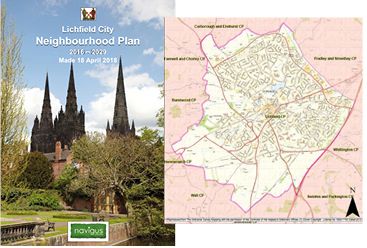A new report from Reading University has provided the first in-depth look at the take up of the concept of Neighbourhood Planning, which has been on offer to communities in England for almost a decade.
It was formally introduced into the English planning system under the Localism Act (2011), although first wave ‘frontrunners’ were piloting the initiative from late 2010.
Over the decade, the researchers say NP has remained as an important part of Central Government’s approach towards localism, enabling local growth and increasing the housing stock.
The review was funded by the Ministry of Housing, Communities and Local Government (MHCLG), and follows on from the User Experience of Neighbourhood Planning in England study conducted in 2014, funded through the Government’s Supporting Communities programme (and published by the same authors, Professor Gavin Parkerand his colleagues).
The latest report is the distillation of an extensive research project that has surveyed Local Authorities, consultants, the development industry, as well as both communities who have completed a Neighbourhood Development Plan (NDP) and those who have struggled to complete their Plan.
The data collection elements of the research was conducted between September 2019 and March 2020 and involved desk study analysis of 141 plans as well as a cohort assessment of 865 completed neighbourhood plans; 143 questionnaires targeted at active neighbourhoods and Local Planning Authorities. Nine case study areas across England involving 20 neighbourhood plans were studied and three targeted discussions with developers, non-completing groups and active neighbourhood planning consultants were held.
The study was led by Professor Gavin Parker, Chair of Planning Studies at the University of Reading’s Henley Business School, and had input from the Navigus planning consultancy, which specialises in neighbourhood and community planning.
The research was set out by MHCLG to cover a series of core Research Objectives (ROs). These concerned:
- Development Impacts and Housing Supply
- Other Development Impacts (including Quality of Development)
- Decision-Making and Investment
- Community Attitudes and Engagement
- Influence of Geography
- Success Factors and Common Barriers
Key Findings
The key findings are recorded in the report as follows in terms of the six research objectives:
1. Development Impacts and Housing Supply
Neighbourhood planning’s contribution to housing supply can be significant. Neighbourhood plans which are allocating housing sites are providing sites for an average additional to local plan allocation 39 units per neighbourhood plan. The study found 18,000 units above LP allocations in 135 plans. However communities seeking to make housing allocations did encounter added burdens, both technical and political compared to creating a non-allocating NP. Scaling-up production of NPs could make a significant contribution to housing supply – particularly if cooperation between neighbourhoods and LPAs are strengthened further. There was no evidence found that NPs displace development from other parts of the local authority area.
2. Other Development Impacts (including Quality of Development)
Neighbourhood plans have helped improve design policy and refined local priorities e.g. housing for specific societal groups. There is further potential within the neighbourhood planning process to reflect both community needs and tie with more strategic concerns coming from above. Closer partnership working between communities and planning professionals (i.e. local government planners and planning consultants) can help address this. Better recognition and more targeted support for the effective integration of place- making matters that go beyond pure land use planning policy would also benefit neighbourhoods and other interested parties (e.g. local government, third sector, funders).
3. Decision-Making and Investment
Neighbourhood plans have improved local engagement with local planning authorities, and are important vehicles for place-making beyond land use planning. Other initiatives have included the establishment of Community Interest Companies and Community Land Trusts.
This highlights that communities lack a formal arena for place-making projects unrelated to planning policy, and may help explain why a large number of communities have not completed land use plans (NDPs).
In terms of how the Plans are used in practice, the evidence from LPAs and appeals indicates NPs do have an influential role in decisions, reflecting their legal status, and as a minimum they provide nuance to decisions. Over half of LPA respondents see NDPs as having a ‘moderate’ or ‘high’ degree of influence on decision-making. Moreover, responses suggest the vast majority of decisions that go to appeal go in favour of the relevant NDP.
However, their impact will vary according to the circumstances and Plan policies. We found no evidence that NPs were ignored but some communities felt Plans were not always recognised as clearly as they would wish. This indicates that LPAs could better communicate how neighbourhood plans have been taken into account and highlights the value of clear and specific policies that have been road-tested by development management officers. MHCLG could share best practice to support LPAs in their role in developing and implementing NDP policies.
4. Community Attitudes and Engagement
Community attitudes to development may become more positive as a result of the NP experience, and the acceptability of development is supported by a large proportion of Plans with policies on design and affordable housing. Some neighbourhoods reported better relations with LPAs and a more positive attitude to development, but in other cases poor relations with some LPAs and lack of an up-to-date Local Plan also presented a barrier.
There was no clear evidence that there is faster delivery of sites, though where sites are chosen in the NDP they are clearly more accepted by the community, which can reduce delays associated with legal challenges or other forms of opposition. Often allocation of sites is a motivator as it allows greater protection of other locally important spaces. It is therefore important to maintain protection for neighbourhood plans from speculative development.
5. Influence of Geography
While there has been strong take-up of neighbourhood planning since 2011, there are many neighbourhoods who have not used this community right. The total number of communities who have started or completed neighbourhood planning went beyond 2,600 in Autumn 2019, but the take-up rates have slowed considerably. The main reasons for this are associated to known time, processual and technical burdens, relationship with local plan progress, and levels of enthusiasm in some local planning authorities. This indicates that for some neighbourhoods an uptodate Local Plan lessens their concern to finalise a NDP.
There is a noticeably low take-up in urban areas, and in northern regions. It is notable that all LPAs with no activity are urban. There are a range of reasons for this disparity and if government wish to continue to support the initiative there will need to be affirmative action taken to sustain and expand neighbourhood planning activity. Government are missing an opportunity to realise benefits in urban and deprived areas and assist in their levelling-up agenda. As such Government should consider either increasing support to reflect additional challenges faced by these communities, or ensure community engagement/involvement, in other less burdensome ways.
6. Success Factors and Common Barriers
While NP is a manageable process for most parished communities and a NDP is an achievable goal, support from consultants and positive relationships with LPA are important to helping with progress. MHCLG could do more to identify and share best practice for LPAs, particularly around site identification. The process remains burdensome for community volunteers with the time taken to reach completion around three years (and for many it can take longer). NDPs take longer when Local Plans are in progress, particularly where a new Local Plan is initiated afterNDP work has started. This can add a further 6-10 months to NDP production on average. Better alignment with LPAs and Local Plans may assist here.
Local Planning Authority (LPA) support overall is varied, with examples of strong support but also ambivalence in other areas. A common criticism was duplication of policies and MHCLG could find ways of better aligning / integrating Local Plans and NP processes – through clearer ongoing communications between LPAs and neighbourhood planning groups.
Key Areas for Further Work
A list of 13 suggested areas for further work are set out in the final report and they are aimed at maximising the benefits of neighbourhood planning. These include integrating neighbourhood planning better across the key actors who play important roles in its success and involve attention being paid across a number of aspects of neighbourhood planning. The research team’s suggestions seek to add value to the policy and address four wider governmental aims, namely: the levelling-up agenda, improving the design of new development; increasing the supply of housing and affording more power to communities.
The suggested areas for further work, set out in section 3.2 in the full report below, briefly are:
- to continue to support the neighbourhood planning policy (Area 1);
- to address uneven uptake of neighbourhood planning (Area 2);
- to introduce a ‘triaging’ process to funnel communities into the appropriate tool for their needs and aspirations and (should they pursue an NDP) to tailor support (Area 3);
- to reform funding arrangements to make them more equitable (Area 4);
- to introduce better training for all NP participants (Area 5);
- to guide and encourage LPAs to better support NP communities (Area 6);
- to continue and extend the emphasis on NP as a means to deliver enhanced design (Area 7);
- to better align NDPs and Local Plans (Area 8); Page 5 of 44
- to actively promote creative participation and place-making beyond land use planning matters (Area 9);
- to promote more efficient knowledge exchange (Area 10);
- to ensure greater consistency during the NDP examination process (Area 11);
- to improve messaging around decisions made using NDPs (Area 12); and
- to provide greater clarity concerning NDP Reviews (Area 13).
The report undertook a full update of neighbourhood plan activity covering over 2,600 designated NP areas and all ‘made’ Plans under the concept – a total of 865 at the time of the research. It also evaluated all plans that had passed referendum and allocated sites for housing between mid-2015 and 2017, a total of 141 plans.
Questionnaires were designed to collect a range of qualitative and quantitative data, including the views of community members representing 100 made NDPs from across England and those of the Local PlanningAuthorities s supporting communities in 43 of them. A series of nine case studies were used for furtheranalysis including interviews, representing a spread of more urban and rural areas, by geography and in terms of number of completed neighbourhood plans (Figure 1).
Figure 1: WP3 Case Studies
Case | Character | Region | Number of adopted/made Plans (as at Oct 2019) |
1. Camden | Urban | London | 4 |
2. Leeds | Urban | Yorkshire | 13 |
3. Bassetlaw | Rural | East Midlands | 15 |
4. Sedgemoor | Rural | South West | 8 |
5. Basingstoke | Urban/Rural | South East | 10 |
6. Aylesbury | Urban/Rural | South East | 21 |
7. Lichfield | Urban/Rural | West Midlands | 11 |
8. East Suffolk | Rural | East of England | 9 |
9. Herefordshire | Rural | West Midlands | 67 |
Finally, the targetted discussion involving two focus groups (planning consultants and housing developers) and a set of 11 ‘stalled groups’1 studies were completed. The focus groups and interviews were organised to discuss key themes that covered participant experiences and the study’s research objectives.


